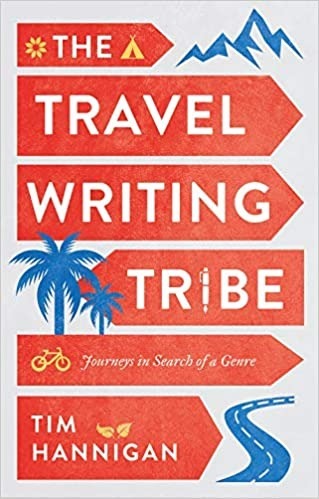
In his comprehensive study of travel writing, Tim Hannigan explores the genre’s history and critical reception and tracks down well-known practitioners, from William Dalrymple to Dervla Murphy. He interviews academic Carl Thompson, publisher Barnaby Rogerson and a group of readers from the Globetrotters Club, and interrogates the lexicon of travel writing studies from “travellee” (the local people encountered by the writer) to “affective identification” (empathy with the subject).
Hannigan grew up in Cornwall, trained as a chef, and now writes mainly about south-east Asia. Here, he tackles the criticism historically levelled at the travel writing genre: that it “was hopelessly entangled with the history of European colonialism” and that it “was an elite genre” with Oxbridge-educated writers presuming a shared knowledge of history and classics. He also explores the “rootedness” of certain travel writers – like Robin Hanbury-Tenison and Patrick Barkham – who have somewhere they always want to return to.
While considering “the troubled frontier between fact and fiction”, whether it is acceptable to fictionalise what is essentially a non-fiction genre, he travels to the Dorset–Somerset border to meet Rory Maclean. In his debut, Stalin’s Nose (1992), Maclean famously opens with a pig called Winston falling from a tree and killing the narrator’s uncle. As Maclean was quick to point out, he always “signalled” when he was about to become inventive: “Maclean never pretended to be recounting the hard facts.” Maclean broke the mould but claims that, as an outsider (born in Canada), he wasn’t aware of a tradition of travel writing: “I simply wrote the book that I wanted to.”
For years, travel writing was dominated by white men of a certain class – many of whom, as Hannigan discovers, were educated at Eton. But in our current age of globalisation and budget travel, this has changed with the emergence of writers like Monisha Rajesh, Samanth Subramanian and Sara Wheeler. Meanwhile, the growing popularity of nature writing appears “to have ousted travel writing as the dominant mode of creative nonfiction in Britain.”
Particularly illuminating is Hannigan’s interview with Subramanian, an Indian journalist with a British passport and a degree from an Ivy League university. Subramanian, who lives in Dublin, emphasises travel writing’s journalistic function: “‘journalists . . . talk to people about their lives and about their problems and about their views on the world.’” This approach ensures the travellee has a voice.
Finally, Hannigan makes a pilgrimage to the tiny 10th-century Byzantine chapel in Greece where Bruce Chatwin’s ashes are buried. Chatwin, loved by many, was lambasted for fictionalising The Songlines (1987), his seminal book about central Australia, which effectively denied the Aborigines a voice. Chatwin later claimed it was a novel. Hannigan forgives Chatwin because of “the style of his prose; the way he could call up a place in its entirety with just a few, apparently inconsequential details . . . the sheer joy of being at large in the world with eye and brain engaged”.
The Travel Writing Tribe is meticulously researched and written with endearing humility. The bulk was finished before the pandemic, but Hannigan concludes by observing that “people will always want to read about journeys.” Becoming armchair travellers may well benefit the genre.
This article is from the New Humanist autumn 2021 edition. Subscribe today.

